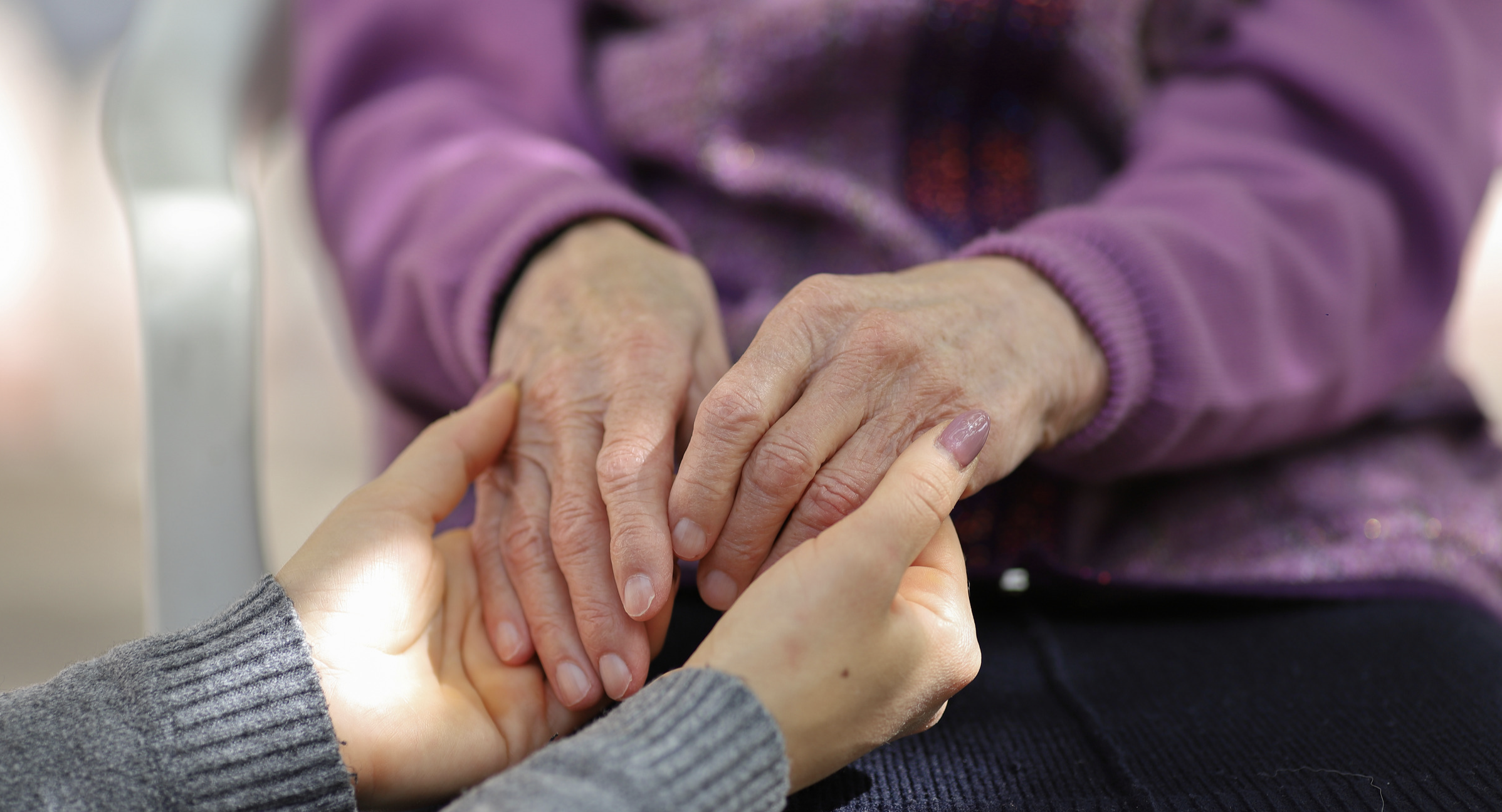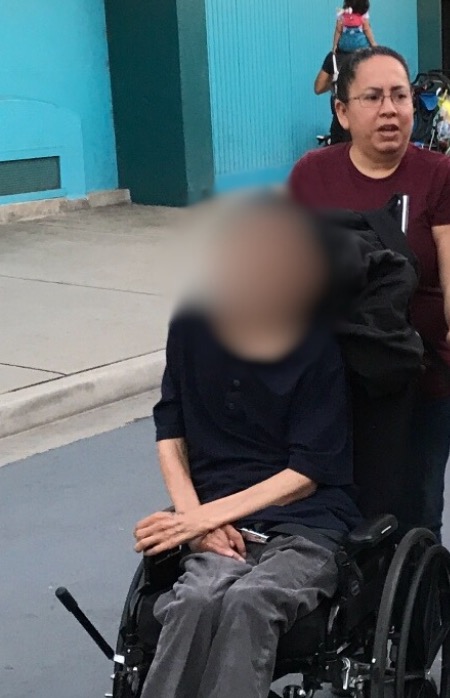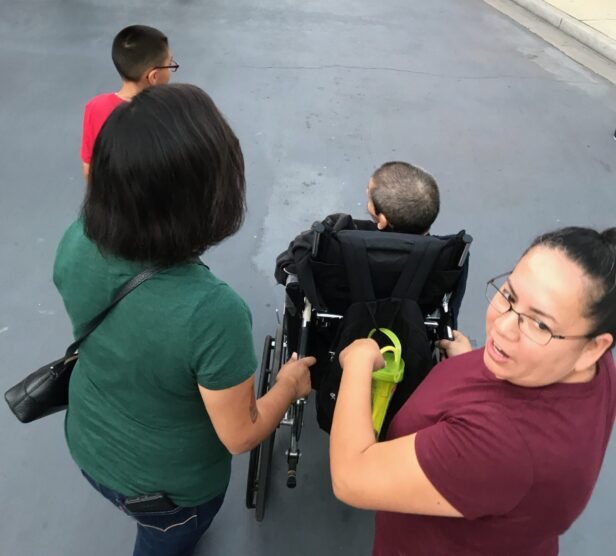Nora Estrada | Kiosko Magazine
Diana Lara has spent the past 33 years working as an at-home caretaker. She shares her story as she stands outside her grandson’s school in Lincoln Heights, near downtown Los Angeles, waiting to pick him up.
It’s one of the rare moments in the day when she says she has a moment to breathe.
“I don’t have much time to socialize or give interviews because my job is very demanding, but I’ll tell you about my day-to-day as a caregiver for an older adult while my grandson gets out of school,” says Lara, 55. “This time is one of the few that I have free all day.”
Time is precious, but for a domestic caretaker, it is all the more so, given that so much of the work is dictated by the unpredictable physical or emotional state of the person being cared for and by the availability of doctors.
“My patient, Salvador, who I have a special affection for because I’ve known him since I was 15 years old, requires care 24 hours a day. I can’t leave him alone for more than an hour because he’s paralyzed from the neck down. Thirty-three years ago, I promised that I would care for him.”
At 23, Salvador, now 56, was shot in the neck, the non-lethal wound condemning him to life in a wheelchair. Lara has cared for him ever since.
She is among the nearly seven million Californians who look after a friend or loved one with a chronic illness or disability, a number that experts say is sure to grow as the population ages.
According to the California Department of Aging, the state is facing a shortage of at-home caregivers. In response, the agency launched the CalGrows program which offers training to adult caregivers and up to $6,000 in pay for those who complete the program, which runs through August 30.
The department’s assistant director, Renita Polk, noted during a recent media briefing that by 2030, a quarter of all Californians — 10.8 million people — would require another 3.2 million caregivers and healthcare workers.
The goal of CalGrows, she noted, “is to equip them with valuable skills and pave the way for new career possibilities.”
In the meantime, caretakers like Lara continue to shoulder the weight of care for millions across California and nationally.
“I clean him, I prepare his food, I feed him, I give him his medications on time, I give him physical therapy, I make his medical appointments, I take him to the doctor, I empty his bladder, I move him every two hours during the night, that’s in addition to making sure he has everything he needs for the house, from stocking the pantry to cleaning. This is my day-to-day life. That’s how it is 24 hours a day, seven days a week,” she said.
Despite the challenges, Lara says she won’t leave Salvador in the care of an assisted living facility because she does not believe they will offer the same level of care that she provides. Many, she notes, are often short-staffed.
Surveys have found that an overwhelming majority of nursing homes and assisted care facilities across the country are understaffed, part of the reason cited for the high mortality rate during the Covid 19 pandemic. The situation remains dire, with most facilities citing challenges in hiring and retaining staff due to a combination of factors including low pay, demanding conditions, and burnout.
“I prefer to look after him rather than leaving him at a center because I worry that they won’t take good care of him,” insists Lara, who lives full-time with Salvador at his home in Lincoln Heights.
“The first thing I do when I get up is go check on Salvador and give him his medications. Then I take my grandson to school before returning to serve Salvador his breakfast. That’s followed by some physical therapy and then I prepare him for the bath. By then it’s time to prepare food before going back to pick up my grandson.”
Lara then returns to feed Salvador and review any upcoming medical appointments.
“At 4:00 in the afternoon I give him his pills,” she added. “After that, I get a chance to rest for a while before preparing dinner at 6:00 in the evening. After dinner, I clean him again so he can sleep comfortably.”
The end of the day, however, does not mean that Lara’s work is done. She has to get up every two or three hours to change Salvador’s position.
“I’m not complaining, but if you ask me if I have a social life, no, I don’t have a social life. But I’m happy that Salvador is still alive, against all odds, because twice doctors have told me that he has little time left,” she commented.
Lara admits that her current job is harder than past jobs, including a stint at the retail chain Target, where she says the work was less demanding and paid more. “But no one is going to take care of him better than me… I wish they paid better, but hey, we do what we can with the pay,” she commented.
The average wage for a domestic care provider in California hovers at just around minimum wage, which is $20 per hour. Nationally the average is around $14.50. Lara says her starting pay was $14 and then went up to $17 during the pandemic. She currently earns $18 per hour, though she is only compensated for six hours per day.
President Biden has at various turns attempted to push pay raises for home care workers, many of whom remain in poverty, and has made the issue part of his bid for reelection in November.
“It’s a lot of work. I take care of him because he is a special person for me, but I wouldn’t work for someone else for that salary, which doesn’t correspond at all to the amount of work I do.”
She continues, “I do almost all the work that a nurse does… but we are not paid like a nurse, and besides, Salvador would require two nurses because the work is 24 hours, there would have to be a day nurse and another at night,” she said.
Transportation to and from the doctor’s office presents a whole other set of challenges.
According to Lara, available transportation services can take up to the whole day because they normally pick up and drop off multiple patients. Instead, Lara helps Salvador into her vehicle, guiding him from his wheelchair into her car to make the trip to the hospital. It’s a laborious process, and she worries she may injure herself.
“The work is hard, it’s hard…” Lara sighs as her grandson exits the school. But then she quickly recomposes herself and, with a note of determination, adds, “But I don’t regret giving my life to his care.”







